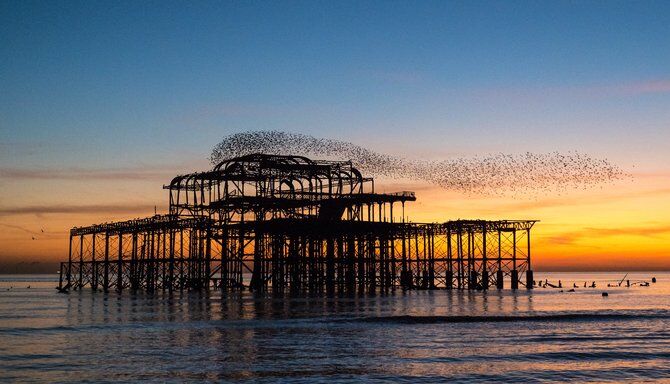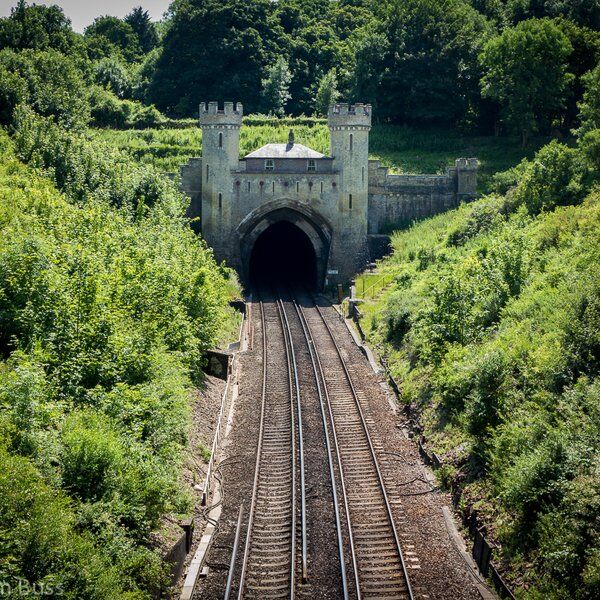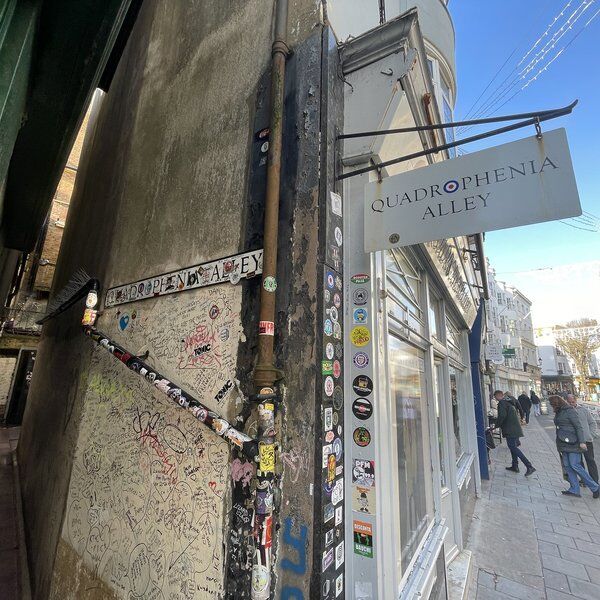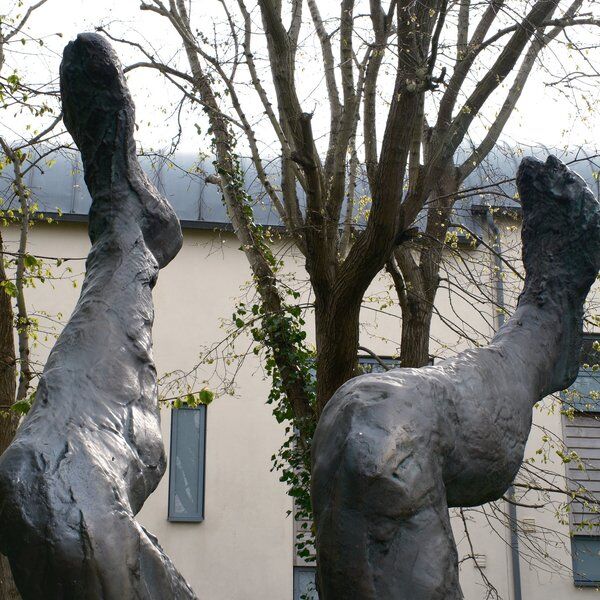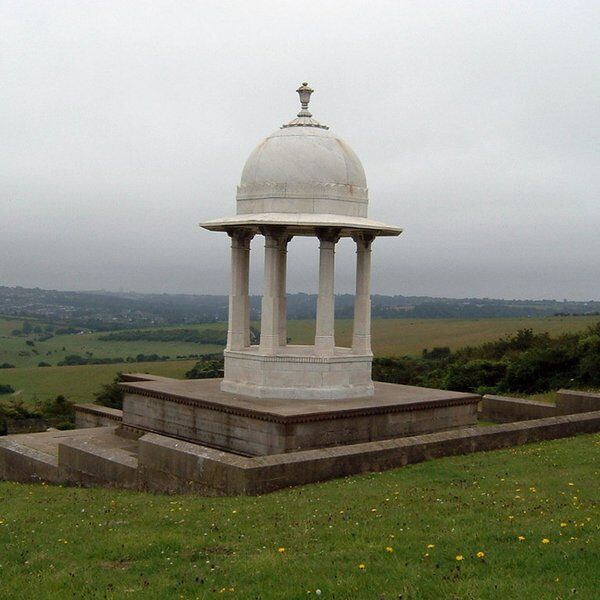Discover Brighton West Pier
Situated against the backdrop of Brighton's iconic coastline, Brighton West Pier emerges as a testament to the grandeur and elegance of Victorian-era seaside architecture. After the Royal Suspension Chain Pier, West Pier was the second pier in Brighton, but the first in Britain to achieve a Grade I listing. From its inauguration in 1982 it is now the most at-risk Grade I listed building in the United Kingdom.
With its skeletal remains jutting out to the sea, the West Pier beckons visitors to step into a bygone era of glamour and leisure. In this blog post, we'll explore the history, rise to glory, and eventual demise of this once-majestic pier.
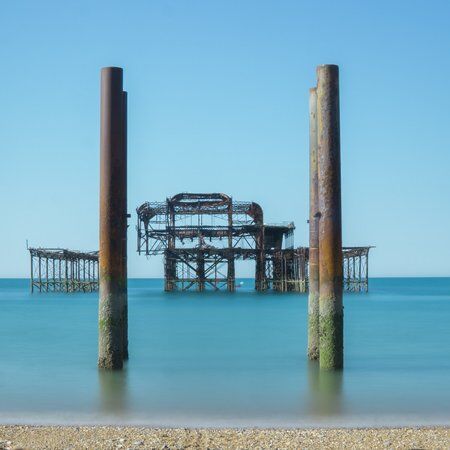
Designing the Brighton West Pier
Designed and engineered by Eugenius Birch, the West Pier was a marvel of Victorian seaside architecture. Its construction, which faced initial objections, featured cast iron threaded columns screwed into the seabed, which meant it could withstand the harsh marine environment.
Spanning 1,115 feet in length and 310 feet in width, the original design included ornamental serpent designs, ornamental houses, toll houses, and glass screens at the pier head. Later additions in 1893 and 1916, such as a central bandstand, a pavilion with a capacity of 1,400 people, and a concert hall, contributed to the pier's versatility.
The History of Brighton West Pier
Creation during the Victoria Era
Opened on 6th October 1866, the West Pier of Brighton was always intended as an amusement attraction rather than a traditional landing for ships or passengers. As the second pier in Brighton it played a pivotal role in drawing tourists to the seaside town during the Victorian era's fascination with pleasure pier construction.
20th Century Peak
Between 1918 and 1919, after the extension in 1893 and the addition of a concert hall in 1916, the West Pier reached its peak, attracting a remarkable 2 million visitors. As a hub of entertainment, the pier’s performances included concerts by renowned artists and theatrical productions. It became an integral part of Brighton's identity, even after a direct hit by a Royal Air Force fighter during World War II.
However, the pier faced financial difficulties in the 1960s, and its popularity waned. This led to the replacement of concerts with a funfair and tearoom. A local company assumed ownership in 1965 but faced insurmountable maintenance costs, resulting in bankruptcy.
Decline and Closure
In the 1970s Brighton West Pier fell into disrepair. By 1975, it closed its gates to the public. In 1987, the Great Storm inflicted structural damage, leading to the removal of shore access in 1991 for safety reasons. Despite efforts by the West Pier Trust to offer tours in the 1990s, the pier continued to face challenges. In 1998, a £14 million pledge from the National Lottery for restoration fell through due to the inability to find a suitable partner, triggering financial disputes with the Palace Pier owners.
Storms in 2002, coupled with arson incidents in 2003 that gutted the water-locked concert hall, and an eventual collapse in June 2004 of the West Pier’s middle section, hastened its demise. These events prompted English Heritage to declare the pier irreparable. Structural demolition in 2010 made way for the i360 observation tower, but subsequent storm damage persisted.
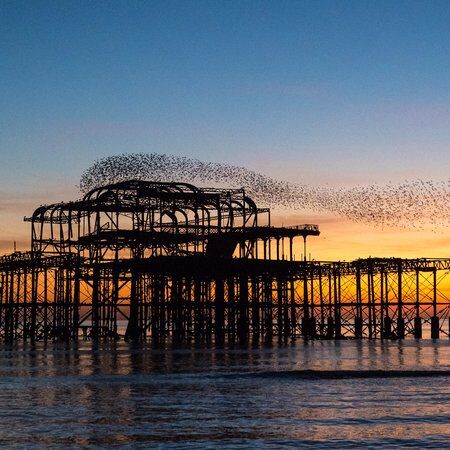
Challenges and Restoration Efforts
Responding to Brighton West Pier’s deteriorating state, the West Pier Trust was established, taking ownership from the council in 1983 for a fee of £100. However, the council stipulated an additional £800,000 for urgent repairs before permitting public access. Unfortunately, a proposal to rejuvenate the pier with a 60-metre ferris wheel met a setback when the sponsor declared bankruptcy, leading to the project's failure.
Over the years any restoration plans have encountered opposition from local residents and the nearby Palace Pier's owners, who argue against potential unfair competition. However, others do advocate for the revival of Brighton West Pier. Discontent was especially expressed after the council prioritised the development of Brighton Marina over the pier's restoration.
“The West Pier will never be rebuilt. We cannot restore it. The ruin is going to change over time. But part of the joy of looking at the West Pier over any period of time is that it is constantly changing. It gets people to think about the past, present and future.”
There were proposals for a new West Pier, with hopes for completion by 2026, coinciding with the original pier's 160th anniversary. However, by October 2016, the Trust deemed the idea as unrealistic. Periodic auctions of pier remains have funded a new seaside learning centre at the pier though.

Brighton West Pier Today
Contrary to initial fears, the structure appears to be in better condition than anticipated. The detailed ironwork, staircases, walkways, and much of the original support structure have endured the test of time, showcasing the pier's resilient beauty.
Beyond its architectural significance, the pier's ruins have transformed into a habitat for local wildlife including cormorants and other bird species, as well as marine life.
Visiting the Brighton West Pier
For those planning a trip to Brighton, a visit to the West Pier is a must. While it may not offer the amusements of its glory days, the pier has formed an impressive backdrop in films like Oh! What A Lovely War, Carry On Girls, and La Course à l’échalote. So clearly the skeletal remains of Brighton West Pier are still worth visiting!
Discovering the West Pier Centre
At beach level, West Pier Centre lies just east of the Brighton i360 and adjacent to the Golden Spiral near the Hilton Brighton Metropole. Serving as the seafront headquarters for the West Pier Trust, the centre is full of information, hosting exhibitions, offering books and souvenirs, conducting monthly talks, organising events, and facilitating educational and community engagement sessions.
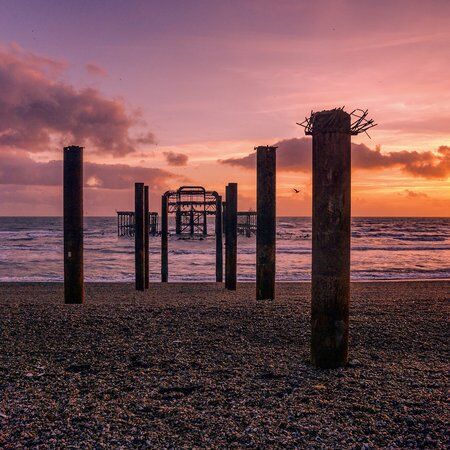
Our Thoughts…
The Brighton West Pier stands as a silent witness to the changing tides of time, a reminder of an era when seaside resorts were at the height of fashion. Its skeletal remains, though weathered and worn, continue to inspire awe and admiration.
Explore Brighton with CityDays
The best way to discover more hidden gems around Brighton is to take your time and, ideally, have a pre-planned route that takes you past all the noteworthy nooks and hidden gems.
We can help you there!
We have two brand-new trails that combine the fun of an outdoor treasure hunt with the historical facts and whimsical trivia of a walking tour.
Answer riddles, solve puzzles and learn more about Brighton's history in a new and interactive way!
Take the stress out of planning your visit to Brighton and book your adventure today!
Not visiting Brighton this time? Don’t worry, you’ll find us all over the world.
